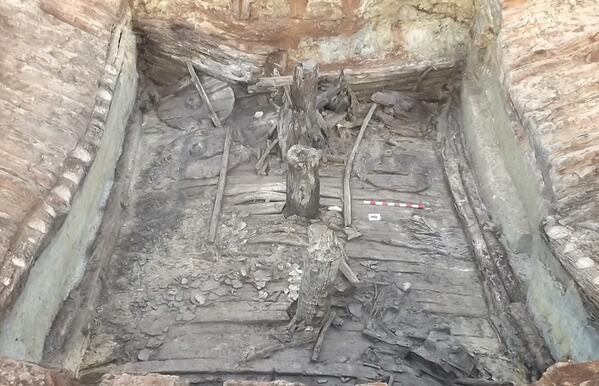Ancient Georgia Burial Ground May Have Hosted 'Human Sacrifice'

Archaeologists have discovered a 4,000-year-old burial site containing chariots and gold artifacts in the country of Georgia - and believe it may have been used for human sacrifices.
The team, led by Zurab Makharadze, head of the centre of archaeology at the Georgian National Museum, unearthed the timber burial chamber within a 39-foot-high mound called a kurgan.
When they reached the chamber, they discovered two four-wheeled chariots, ornamented clay and wooden vessels, flint and obsidian arrowheads, leather and textile artifacts and a wooden armchair.
In the summary of a presentation Makharadze gave recently at the International Congress on the Archaeology of the Ancient Near East, held at the University of Basel in Switzerland, he announced the researchers had also found carnelian and amber beads, as well as jewellery.
"In the burial chamber were placed two four-wheeled chariots, both in good condition, the design of which represents fine ornamental details of various styles," Makharadze wrote.
He added that the chamber also contained wild fruits.
The kurgan was found in eastern Georgia near the municipality of Lagodekhi and was excavated in 2012.
The archaeologists discovered the remains of seven people in the chamber, although the bodies had been disturbed by a robbery which likely occurred in ancient times.
"One of them was a chief and others should be the members of his family, sacrificed slaves or servants," Makharadze told Live Science.
The burial dates back to a time before domesticated horses were found in the area. The chariot is likely to have been pulled by oxen, according to Makharadze, although no animals were found with the equipment.
According to Headlines and Global News, other rich kurgan burials dating from the second half of the third millenium BC have also been found in the south Caucasus region.
The appearance of these burials appears to be connected to interactions that occurred between nomadic people from the Eurasian steppes and farming communities within and near the region.
Makharadze said that such interactions have led to some individuals receiving lavish burials. He added that the wooden armchair symbolises the power that some people had.
"The purpose of the wooden armchair was the indication to power, and it was put in the kurgan as a symbol of power," Makharadze told Live Science.
© Copyright IBTimes 2025. All rights reserved.





















